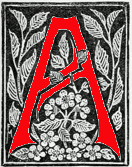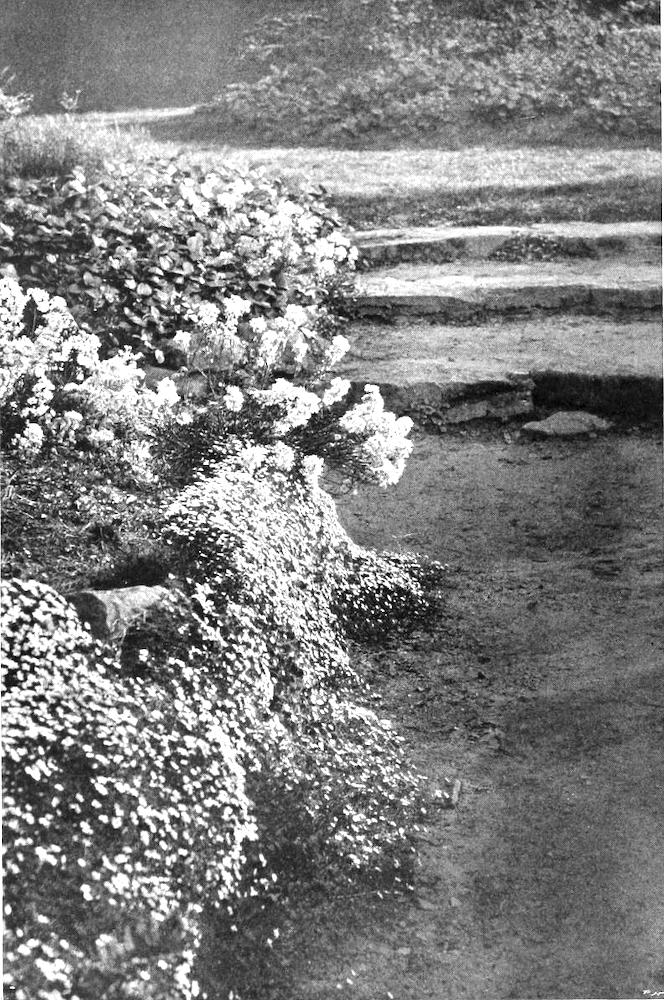Caroline Murray originally posted this piece in the Cambridge Library Collection Blog for 11 September 2012, when she held office at the Cambridge University Press, and has kindly allowed us to reprint it here. The title refers first to the area where the poet John Keats died in Rome, in a house beside the Spanish Steps; then to the Surrey home of the garden expert Gertrude Jekyll, which was designed for her by Edward Lutyens, and for which she created a wonderful garden filled with both homely and exotic plants. The two places are curiously linked by their association with the Severn family. In tracing this connection, Murray provides a useful background to the work of (Ann) Mary Newton (née Severn). The piece has been very slightly adapted for the Victorian Web, and illustrated by Jacqueline Banerjee.

n unexpected conjunction of Cambridge Library Collection authors was revealed when I was looking up the artist Joseph Severn in the Oxford Dictionary of National Biography — I wanted to check whether the artist Arthur Severn was his son or his nephew.
Arthur Severn (1842-1931) was the husband of Joan Agnew, the cousin of John Ruskin who lived as companion to his mother after her husband’s death, and who, together with Arthur, became Ruskin’s own travelling companion and later his carer in the terrible twilight years at Brantwood. She is described affectionately in Praeterita, as is also a visit to Arthur’s father, Joseph (1793-1879), in his studio in Rome.

The house where Keats died, beside the Spanish Steps in Rome, now the Keats-Shelley Museum (public domain from Wikimedia).
Joseph had lived on in Rome for twenty years after he had accompanied his friend John Keats on the journey to Italy in September 1820 by which he hoped to recover his health: Keats famously died in Severn’s arms on 23 February 1821. He had built up a clientele of expatriates and English visitors for his paintings, but moved back to England in 1841, partly for the education of his children (six, including the twins Arthur and Eleanor). Of the children, Arthur, Walter (1830-1904) and (Ann) Mary (1832-1866) also became artists — and Mary was by some way the most successful. The Severns’ return to England had been financially unfortunate, and Mary became the effective breadwinner as the family fell into debt.
In 1861, at the age of twenty-eight, she married Charles Newton, whose unearthing of the Mausoleum at Halicarnassus (one of the Seven Wonders of the ancient world) was but one of the many justifiably headline-grabbing archaeological exploits with which he was involved. They had met in 1858, between his field trips, and he had proposed, but Mary (and her earnings) could not leave her family. A neat solution was achieved when Newton, who had been, inter alia, serving as British consul at Rome, resigned his post in order to become Keeper of Greek and Roman Antiquities at the British Museum — he was a favourite of Panizzi’s, as well as being admirably qualified for the job. Joseph Severn then applied for, and got, the consulship in Rome, and happily moved back to Italy; Mary was released from her filial duties and married Newton.
They toured the Middle East together, and she drew some of the pictures which illustrate his two-volume Travels and Discoveries in the Levant. Walter Severn appears to have engraved several of the plates, based on photographs taken by D.E. Colnaghi (of the famous fine-art family, and also a British consular official). She was in demand as a portrait painter, especially after she had sketched three of Queen Victoria’s daughters, was working increasingly in oils, and was — judging by the self-portrait which Sir Charles Newton bequeathed to the National Portrait Gallery in 1894 — a beautiful and self-assured professional woman. But in 1866, aged only thirty-three, she died of measles.

Steps in the garden at Munstead Wood. "Cuckoo-Flower and Sandwort in the Rock Garden," photograph by Gertrude Jekyll (Jekyll, facing p. 103).
An intriguing detail in her ODNB biography was that the Newtons had been accompanied on the Levantine journey by "the young artist Miss Gertrude Jekyll." This surprised me, as I had always thought of Jekyll as a bit of a home body, but cross-referring to her own entry in the ODNB, I see that she had first met Newton at her parents’ house, and that she had accompanied the pair on their travels in 1863–64, having previously trained at the Female School of Art in South Kensington (a legacy of the Crystal Palace, and now part of the Royal College of Art). It was this journey that started her great love affair with Mediterranean plants, and her pragmatic testing of their capacity to flourish in a British climate.
So there you have it: Keats — Joseph Severn — Arthur Severn and Ruskin — Mary Severn, Newton and Jekyll – who died 111 years after Keats, and 100 years after Mary was born.
Bibliography
Fowler, Rowena. "Newton [née Severn], (Ann) Mary (1832–1866), painter." Oxford Dictionary of National Biography. Online ed. Web. 5 January 2020.
Jekyll, Gertrude.
Kaloustian, David. "Severn, Joseph (1793–1879), painter." Oxford Dictionary of National Biography. Online ed. Web. 5 January 2020.
Tooley, Michael. "Jekyll, Gertrude (1843–1932), artist and garden designer." Oxford Dictionary of National Biography. Online ed. Web. 5 January 2020.
Created 5 January 2020